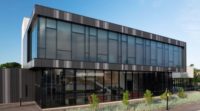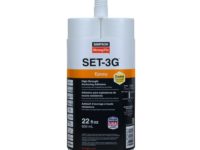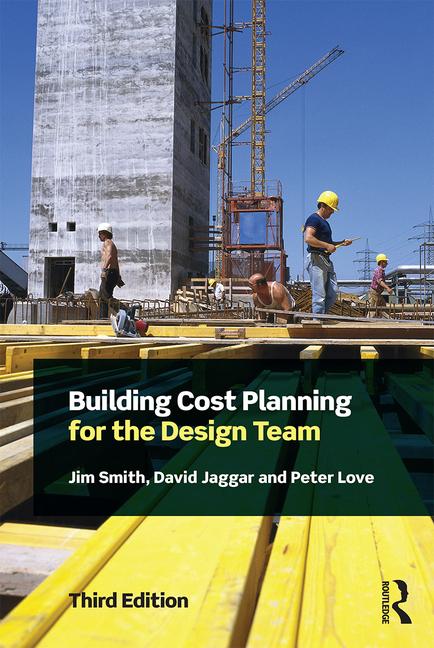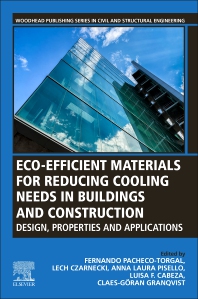Case study by US WoodWorks
Founded in 1950, Arena Stage was one of the first regional theaters in the U.S. The theater had a history of taking risks and breaking down barriers, and has always been known for being on the leading edge of performing arts in America. In the late 1950s, the theater’s directors hired Harry Weese, a famous American modernist architect from that era. Weese proceeded to design one of the first modern in-the-round theaters in America, from which the theater company’s name
is derived. Completed in 1961, the Fichandler Theater (named after Arena’s founder Zelda Fichandler) is an excellent example of American brutalist architecture, “a ragged and tough, but historically significant concrete building,” says Heeney. Several years later, they built an adjacent theater called the Kreeger
Theater, also designed by Weese.
Over the years, Arena Stage built a reputation for cutting-edge performances. However, when artistic director Molly Smith was hired in 1997, she found herself with a complex that no longer met the theater company’s needs, both spatially and technically. In particular, they needed twice as much space as they had, the venues were dated and performances were often interrupted by outside noise.
Deep, Dark and Dangerous
“Molly has this wonderful mission statement, and part of it calls out that she wants to celebrate all that is deep, dark and dangerous in the American spirit,” Heeney says. “It was the dangerous part that caught our imagination.” However, Heeney says the fact that Kreeger and Arena Stage were both listed as historic structures complicated matters. “Washington is a city that takes its historic buildings very seriously, so we had to figure out how to meet Molly’s needs without compromising the character of the existing theaters.” Bing Thom and his team decided to cover and wrap the two theaters with an insulated glass wall to provide acoustic separation from nearby Reagan National Airport and surrounding traffic. The area between the theaters became the new lobby and offices. They added a new third theater, and covered it all with a 500-foot-long cantilevered roof, creating 200,000 square feet of enclosed space.
“It was important that we develop a transparent wall so you could see the old theaters,” explains Heeney. “So we decided to use a heavy timber-supported roof and glazing system. The structure uses a series of large parallel strand lumber [PSL] columns, widely spaced to encourage transparency through the building. These wood columns support the glass façade and a dramatic roof.”
Wood Columns and Muntins
Because they had already collaborated on significant projects in British Columbia, Bing Thom turned to Fast+Epp Structural Engineers and StructureCraft Builders. The design achieved several objectives, most notably with the façade, says Gerry Epp, principal-in-charge at Fast+Epp and structural engineer of record for the $130 million project. Washington D.C. Performing Arts Center
“In order to eliminate the need for cross-bracing along the 650-foot-long façade, we used the walls in the new, centrally located Cradle theater to brace the roof,” he says. “We increased transparency by shaping the large wood column cross-sections according to the internal stresses. We engineered an economical system for a sensitive glass façade subject to large out-of-plane deflections using spring-loaded cables and wood muntins, which carry the dead load of the glass. And we developed and tested a nearly-invisible connector for the façade muntins, which carry bending moments as well as axial forces.”
“We were all committed to the concept that the shape of structure can be beautiful architecture at the same time,” said Brian Woudstra, business development engineer with StructureCraft. “So we started with the same design we devised for Central City, a project we had done in Surrey, B.C. eight years earlier. But we wanted Arena Stage to be even more innovative and more adventurous—taller, and with fewer columns. You usually don’t think of wood carrying steel
and glass on this scale.”
The resulting design for Arena Stage uses 18 PSL columns around the perimeter of the façade. Each column measures 45 to 63 feet tall and supports the steel roof trusses, which cantilever beyond the envelope to create the overhang that runs around the structure. The wood columns are spaced 36 feet apart and elliptically shaped for structural efficiency, to minimize their visual impact and create a feeling of transparency into and throughout the space. Designed to brace the tall glass façade against wind loads and to carry the roof loads (up to 400,000 pounds) from the steel roof trusses, some as long as 170 feet, the PSL columns are unreinforced solid engineered wood using no internal steel support.
The glass panels are supported by 324 muntins and 216 support arms, all made from custom-shaped PSL. Fifty-four spring-loaded stainless steel cables stretch between the roof and floor to carry the glazing. “Conventionally, designers would have a building structure holding up the roof, and then have a separate structure to hold the curtain wall,” says Heeney. “Wood did double duty for us. The columns hold up the windows and the roof. When we compared the cost of the integrated wood system against a conventional steel column and separate aluminum curtain wall system, the wood system came out as being less expensive.”
Engineered for Strength
PSL consists of long veneer strands laid in parallel formation, bonded together with adhesive to form the finished structural section. PSL is commonly used for long-span beams, heavily loaded columns and applications where high bending strength is needed.
While it provided the structural capacity needed, Heeney said they ultimately chose PSL because they liked the look. “There’s a consistency to it which we think is attractive. Plus, it has a nice texture and pattern. We needed something that was relatively homogenous looking, and that’s what we got with the [PSL] product.”
To build the columns, slabs were cut from the PSL, laminated into larger billets, and then bolted together to create a rough rectangular cross-section. To control checking, StructureCraft bolted rather than glued the halves together. They then shaped the columns on a huge lathe to their final elliptical cross-section with tapered ends. StructureCraft sanded the columns and added two layers of clear coat. Then, they de-slivered the bottom 10 feet of each column and added a third clear coat. “Parallel strand lumber is a beautiful material but we had to take the time to make it pleasant to the touch,” Woudstra explains. “Plus, people in Washington, D.C. will be curious, most having not seen [PSL] before. It’s understandable that they’ll want to touch it.”
The elliptically-shaped columns were installed with the narrow direction in the same plane as the glazing to minimize them visually, said Julien Fagnan, associate and project manager for Fast+Epp. “Columns want to buckle in their narrow direction. So, the PSL muntins and support arms not only support the glazing panels, but also brace the columns against buckling.”
Finally, the columns were tapered near the floor, to make them seem even lighter and less obtrusive. “People have compared them to ballet slippers en pointe,” says Heeney. “They really look quite elegant.”
Graceful Connections
Castings were custom designed for the column base to bring the enormous forces down to a single pin. “Connections were key to this design,” emphasized Heeney. “With timber construction, the connections are usually the most expensive component, so when you develop a connection that can be repeated over and over again, you save money. Since we repeated the same connection 18 times, we could spend time making it quite beautiful.”
Castings were mounted on all of the columns before they were shipped. “It was a complex connection,” emphasized Woudstra. “With 400,000 pounds coming through the columns, we needed a positive bearing connection, which required accurate shaping between the bottom of the PSL column and the top of the casting.”
Performance Assured
Column cross-section was governed by deflection under wind loading. Weighing about 10,000 pounds each, the PSL columns were shaped to an elliptical cross-section and fit into delicate-looking but structurally efficient ductile iron castings designed to bring the enormous 400,000-pound roof loads down to a single pin all columns were sized identically for visual consistency. They also installed columns at a 4-degree tilt to minimize glare from the glass.
To verify the design, the team built a scale model and conducted a wind tunnel test in London, Ontario. StructureCraft also built a full-height mock-up five panels
wide, and the general contractor tested the assembly in a Pennsylvania lab under hurricane conditions. Although cost of the mock-up and testing was considerable, the process helped the team fine-tune connection details and erection procedures. Heeney agreed, saying the investment more than paid for
itself in terms of avoiding problems during installation.
3D Models Supported Straightforward Installation
Arena Stage is believed to have the tallest free-standing timber-backed façade in the world. Installation for the unique, geometrically complex structure took all involved into uncharted territory; but the team was prepared.
“We used a customized production process linked to a parametric 3D solids computer model, which tied together our shop pre-fabrication, rigorous quality control and onsite erection,” says Woudstra. “We made the pre-fabricated elements off-site while the base structure was being constructed, which simplified and shortened installation time. And we used our own crews for installation.”
Once the columns were installed and the steel roof trusses in place, crews stretched pre-tensioned cables every 12 feet along the perimeter. Next, they fit the pre-drilled PSL muntins and support arms into the geometry, where they were locked into place with the cables. “We made the connections using a tight-fit dowel system as opposed to a bolted system, which resulted in more discrete, clean connections,” says Woudstra.
“When the contractor installed the heaving glazing and the pre-tensioned cables took the load, everything settled to its proper position.” Because it was such a complex design, Arena Stage required extensive structural analysis and modeling, says Fagnan. “First principles are always important, but this type of complex system required careful modeling.”
Absorbing Sound in the Cradle
Wood was an important element in two other sections of Arena Stage. “Molly (Smith) wanted to introduce a new theater, a third, smaller space,” says Heeney. “She referred to it as the Cradle; it was a womb-shaped theater where actors could take more risks. The Cradle actually played an important role because it
serves as a structural anchor to support the roof.”
From an interior design perspective, though, the Cradle created a challenge. An oval shape would result in strange sound reflections. So BTA developed a wall system that would appear visually substantive, but could absorb and disperse the sound so that the actors’ voices carry properly in the space. “After some trial and error, we developed a wood slat system made from poplar, designed to look like a basket weave,” says Heeney. “The unique wall, which was cost-effectively installed by our drywall contractor, gave us the character and acoustic dispersion we needed.”
Another thing on Smith’s wish list was a lobby big enough for up to 1,400 patrons from all three theaters to be out at the same time. She wanted people to ‘rub elbows’ and share their experience of the show they were about to see or had just seen. To warm that huge space and absorb sound, the design team again used stained poplar for the wood soffit on the lobby ceiling.
Building with Wood in Washington, D.C.
“It’s one thing to do a load-bearing exposed heavy timber structure in British Columbia, where everyone is used to building with wood,” says Fagnan. “It was another thing altogether to do it in Washington, D.C.” Local code authorities were skeptical about allowing wood; they had concerns about fire safety. So the design team presented an in-depth fire report, along with a smoke study done by a code consultant working for the team.
“Through computer modeling, we showed that effects of a fire on the structure would be minimal, and there would be plenty of time for safe building evacuation,” says Fagnan. They also did a char analysis, and showed District of Columbia code officials how char actually protects the interior of the wood. While charring would leave a column of reduced size, calculations showed that because the column was sized mainly for deflection, it already had additional strength capacity.
The process of educating the District’s code officials was long but productive. “I think it will be much easier for the next people in Washington who want to use heavy timber,” laughed Heeney. Wood’s Encore Arena Stage has received almost unprecedented media coverage, and additional wood structures are already being planned for Washington, D.C.
Wood provided both a beautiful finish and structure for Arena Stage, but offers much more for the future. “There is also an increasing recognition that wood is the best environmental choice,” Fagnan adds. “We wanted to take advantage of wood’s capabilities and show its strengths, and we were able to do that with this job.”
Arena Stage certainly demonstrated what’s possible with wood, agreed Woudstra. “We’re showing people how timber can be used for structures in ways that may not have been considered before. The beauty is that wood works well with other materials—for Arena Stage, we integrated wood with the steel roof trusses and cables, with the aluminum connection plates, with the ductile iron castings and the glass curtain wall, and with other connections.”
Woudstra added that they worked hard to use the right material in the right place. “Wood was definitely the right material to use in this case. Arena Stage is an indicator of not only what’s possible, but what we plan to do in the future— which is to keep doing innovative things with wood.”
Carbon Benefits
Wood lowers a building’s carbon footprint in two ways. It continues to store carbon absorbed during the tree’s growing cycle, keeping it out of the atmosphere for the lifetime of the building—longer if the wood is reclaimed and used elsewhere. When used in place of fossil fuel-intensive materials such as steel and concrete, it also results in ‘avoided’ greenhouse gas emissions.
Volume of wood used:
8,800 cubic feet of panel and engineered wood products
U.S. and Canadian forests grow this much wood in:
1 minute
Carbon stored in the wood:
215 metric tons of CO2
Avoided greenhouse gas emissions:
460 metric tons of CO2
Total POTENTIAL carbon benefit :
675 metric tons of CO2
Equivalents to 129 cars off the road for a year or energy to operate a home for 58 years.
Name: Arena Stage at the Mead Center for American Theater
Location: Washington, D.C.
Architect: Bing Thom Architects
Base Building Structural Engineer: Fast+Epp Structural Engineers
General Contractor: Clark Construction
Specialty Timber Façade Design-Builder: StructureCraft Builders Inc.
Completed: 2010
Awards: Named one of the 10 best recent buildings in Washington, D.C. by the Urban Land Institute; Received several craftsmanship awards from the Washington Building Congress










